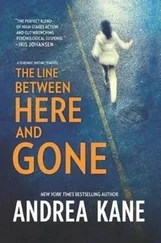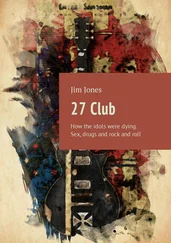Nearly in tears, I’m finished talking. I stop the camera, fold the screen into its stowed position, and put it back in my pack. I hold my head in my left hand and dejectedly shake it, sniffling, wiping my palm down over my nose and mouth, my fingers wiping at my eyelashes and brushing the facial hair under my nose and around my frown lines.
A half hour later, around 3:35 P.M. on Monday afternoon, I have to urinate again. “How is this possible?” I wonder. That’s twice today, despite the fact that I’m most certainly dehydrated. What’s going on?
Save it, Aron. Pee into your CamelBak. You’re going to need it.
Obeying, I transfer the contents of my bladder into my empty water reservoir, saving the orangish-brown discharge for the unappetizing but inevitable time when it will be the only liquid I have. I should have saved the first batch, I realize with hindsight. It was much clearer than this and didn’t smell half as nasty. I debate whether I should drink it or not but defer that choice for later.
I eagerly dig out my digital still camera for the first time and take a series of pictures: a close-up of my arm disappearing into the rock; a detail of my anchor system that suspends me in my harness; and two self-portraits-one looking downcanyon, and one from above my left shoulder that shows me with the chockstone. Reviewing the photos, I also flip through the ones I took during the first two days of my vacation on Mount Sopris and around Moab, then the ones of Megan and Kristi in the upper part of Blue John Canyon. The angels.
“I’m Goin’ to Utah”
People say that we’re searching for the meaning of life. I don’t think that’s it at all. I think that what we’re seeking is an experience of being alive, so that our life experiences on the purely physical plane will have resonances within our own innermost being and reality, so that we actually feel the rapture of being alive.
– JOSEPH CAMPBELL, The Power of Myth
THROUGH THE WINTER of 2003, I kept my immediate attention on the nine 14,000-foot mountains that I was climbing, week by week adjusting my energy to a new route on another challenging peak. They were ends in themselves, a series of intrinsically rewarding journeys, but they also provided a winter-long training regimen that prepared me well physically for my big trip to Denali. I knew from the Stray Dogs expedition in 2002 that the 20,320-foot mountain would demand everything I had to successfully attempt back-to-back climbs, including the sub-twenty-four-hour solo speed attempt and ski descent. Once winter was officially over, I closed the books on another tremendous season with my fourteener project and turned my focus to backcountry skiing.
On an important trip that helped me regain some lost confidence in my avalanche awareness and hazard evaluation, I skied Mount Sopris near Carbondale in Colorado with Rick Inman, a friend and colleague from the Ute. We had a safe day skiing moderate slopes above the Thomas Lakes, steering clear of the steeper, more slide-prone slopes. It felt great to be free of my previous powder-hounding attitude that had gotten my friends and me in trouble on Resolution Mountain just a month earlier.
In late March, Gareth Roberts and I would be competing in the Elk Mountains Grand Traverse, a forty-two-mile backcountry ski touring race from Crested Butte to Aspen. To scout the route, I went out on a solo circumnavigation of Star Peak near Aspen, a twenty-five-mile ski trek. Wanting to test the equipment I would use in the race, I picked up some special waxless metal-edged backcountry skis from the Ute in the morning and got a crack-o’-noon start from the Ashcroft Ski Touring Center. I made the eighteen miles over the three passes before dark, but I crossed over Pearl Pass at nightfall and found myself stranded in a whiteout. I skied about halfway across the prime avalanche terrain of Pearl Basin, taking care to avoid a dozen starting zones and slide paths, but turned myself around in a circle. How many times would it take for me to learn that my compass wasn’t lying to me? Lost above treeline in the dark in the middle of a storm, I decided my best option was to dig a snow cave.
It took me three attempts to find a section of the snowpack that was wind-compacted and sufficiently deep to dig out a shelter at 12,000 feet. I sat in my burrow for five hours, poking my head out every twenty to thirty minutes to check for stars, mountaintops, a valley, or trees, anything that would help me navigate with my map. There were three valleys that I could end up in from my approximate position, two of which were densely packed with trail-less dark timber. I was better off waiting to determine my exact location and then find the valley with the road cut. At around three A.M., the storm cleared enough that I could pick out a peak a few hundred feet above me, and I was on my way, skiing through the fresh snow and keeping off the steeper slopes. Home at five A.M., I showered, napped, and got to work a few minutes late, apologizing for my tardiness to my manager, Brion After, with what I felt was an exceptional excuse.
The race turned into quite the epic, with 40 percent of the teams dropping out due to bitter temperatures in the first half of the race and high winds in the second half. The cold and the storm caused serious frostbite in a dozen people, foiled attempts to stick skins on skis, broke equipment, and as my partner, Gareth, learned, froze water reservoirs solid. Not only were iced-up CamelBaks deadweight, but some competitors became dangerously dehydrated. A little under halfway through the race, Gareth and I were the last team to leave the Friends Hut checkpoint who successfully surmounted Star Pass before the turnaround time. We had raced through eight hours of negative-2-degree temperatures for eighteen miles to make the pass with two minutes to spare. Nine and a half hours later, we were the sixtieth team to finish the race, with only two other teams finishing after us (one pair of racers spent the night out when they inadvertently skied several miles off the course and couldn’t retrace their mistake until morning). Skiing down the face of Aspen Mountain to the cheers of Gareth’s wife and a dozen hearty race volunteers, Gareth and I dropped to our knees in free-heel telemark style just to show we were still having fun. We crossed the finish line to the flashes of cameras, bent our necks to receive our finisher medals, and smiled and laughed with chilled bottles of microbrew in our hands, feeling like we’d won the race. In actuality, the winning teams had finished over nine hours before us, enough time to have showered and gotten a full night’s rest before we tottered through the final timing gate. That’s probably why they all found their way to the awards ceremony, and we got lost and ended up celebrating on our own over burgers and beers at Little Annie’s.
Two weeks later, I took a solo trip to Cathedral Peak and climbed and skied the east-facing gully on the south ridge. Once I’d finished the summertime fourteeners in 2001, I lowered my altitude bar and added another sixty peaks to my list, creating my version of what are known as the Centennial Peaks-the hundred highest peaks in Colorado, the Centennial State. I climbed fifty of those mountains in 2002, bringing my total to 109 of 119 summits above 13,800 feet. Cathedral was next on my list, and it became my 110th high summit in the state. From the top, I surveyed the length of Highland Ridge across the Conundrum Creek Valley. I was planning a traverse of the fifth-class eighteen-mile-long ridge for May, and I videotaped a scouting report to plan the trip.
Skiing off Cathedral was the most extreme backcountry ski descent I’d ever pulled off; the five-hundred-foot-long, fifty-degree east gully was only ten feet wide for most of its length. Thankfully, the snow had softened in the bright sun, allowing me to link several dozen turns down the most technical section of the couloir and relax on the lower-angled apron. I skied out past the Pine Creek Cook-house at Ashcroft at three P.M., being one of the last people to see the unoccupied building before it caught on fire (due to a gas explosion) and burned to the ground forty-five minutes later. The fire engines blazing up Castle Creek Road puzzled me as I drove back into town, until I read in the paper the next morning what had happened.
Читать дальше












